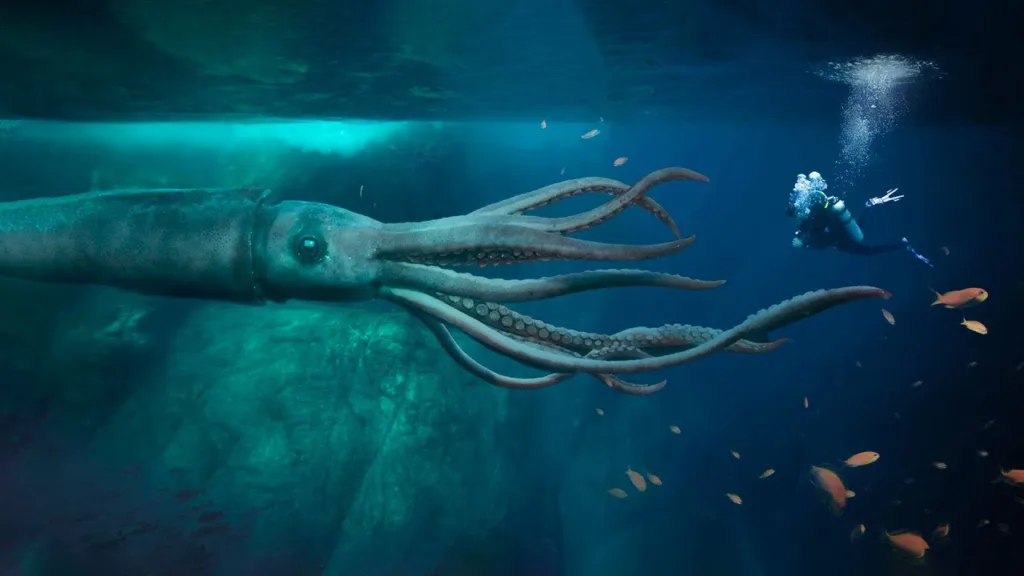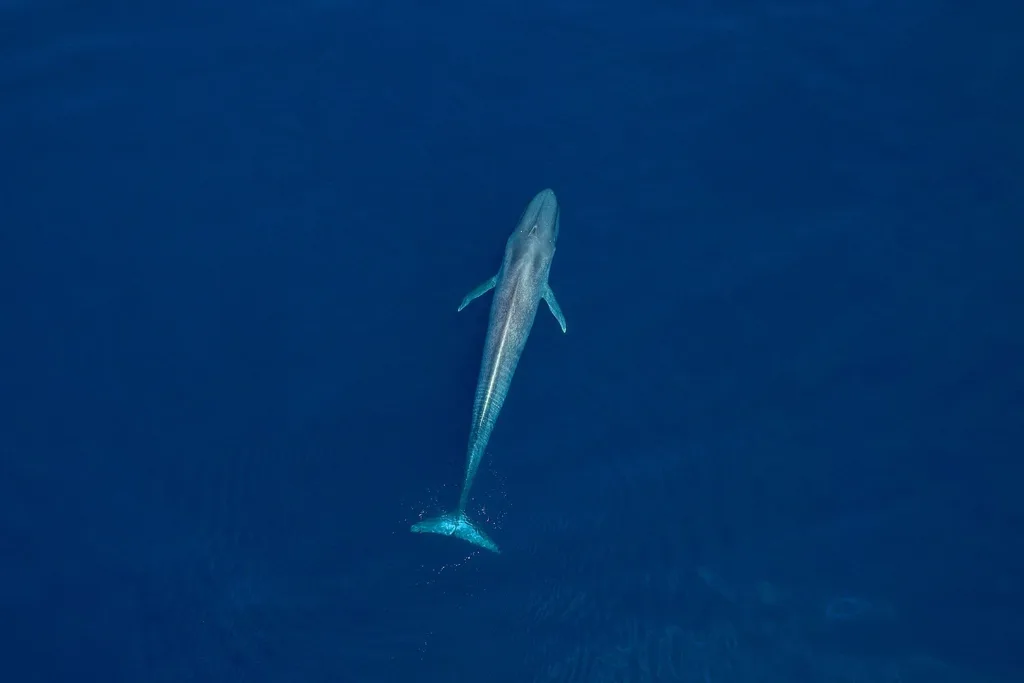Deep sea gigantism is a phenomenon that has amazed scientists for centuries. This phenomenon occurs when certain marine species grow to sizes much larger than their counterparts in shallower waters. Sea creatures such as squids, sea spiders, and worms can grow to be several times larger than they normally would in other sections of the ocean.
Scientists have proposed a few explanations for this type of gigantism. One of the most popular theories is that the cold temperatures at the bottom of the ocean can slow an animal’s metabolism. This helps them conserve energy since food is scarce in these areas due to lack of sunlight and nutrients. Another possible explanation is that reduced predation pressure allows these animals to grow larger without fear of being eaten by predators. Finally, increased dissolved oxygen concentrations may also play a role in deep sea gigantism as these concentrations are known to increase at greater depths due to differences in pressure and temperature.
It’s important to note that deep sea gigantism does not always occur. In fact, some species such as shrimp actually shrink or remain the same size when living in deep water environments. This could be because some species are better adapted to shallow water habitats than others. Additionally, deep sea gigantism has only been observed in certain species and it apears that it only affects invertebrates rather than vertebrates like fish or mammals.
Researchers are still trying to better understand this phenomenon and its implications on our oceans. It’s clear that deeper parts of the ocean provide unique environments for certain marine species that allow them to reach tremendous sizes – something we should all appreciate and strive to protect!
The Causes of Gigantism in the Deep Sea
Gigantism in the deep sea is believed to be caused by a combination of environmental factors. Colder temperatures and reduced predation pressure can lead to larger body sizes, as animals have less competition for resources and less risk of being eaten. Food scarcity can also lead to gigantism as larger animals have an easier time finding and consuming food than smaller ones. Additionally, increased dissolved oxygen concentrations in the deep sea can stimulate growth and allow organisms to reach larger sizes. All of these factors together create an ideal environment for gigantism to develop in deep sea creatures.

Source: livescience.com
The Reality of Deep-Sea Gigantism
Yes, deep-sea gigantism is a real phenomenon. Although it has only been observed in the last century, there are numerous examples of animals that exist in the deepest and coldest parts of the ocean that have grown to be much larger than their surface counterparts. Scientists believe this is due to the reduced competition for resources in these areas as well as unique environmental conditions that allow these creatures to reach such large sizes. These creatures include squids, sea spiders, worms and other invertebrates that can reach lengths of up to several meters long. This phenomenon is both fascinating and mysterious, as scientists continue to learn more about it every day.
Exploring the Theory of Deep-sea Gigantism
Deep-sea gigantism is not simply a theory; it is a phenomenon that has been documented in numerous deep-sea creatures. The term refers to the tendency for certain species of deep-sea animals to grow to much larger sizes than their shallow water relatives. This phenomenon has been observed in many different types of marine life including squid, shrimp, and fish. The exact cause of deep-sea gigantism is still being investigated, but it is believed to be related to the colder temperatures and lower food availability at greater depths.
Surviving Gigantism: Is It Possible?
Yes, it is possible to survive gigantism with successful treatment. Gigantism is caused by an excess of growth hormone, which can be treated with medications that reduce the amount of hormone being produced. Surgery may also be used to remove a tumor in the pituitary gland that is causing the overproduction of growth hormone. With successful treatment, most people will be able to lead healthy and normal lives. However, there are some potential complications associated with gigantism such as muscle weakness, diabetes and psychological issues that need to be monitored and managed over time.
Adults Without Gigantism
Gigantism is a medical condition caused by an excess of growth hormone during childhood. Adults do not experience gigantism because as we age, our bodies become less able to respond to the excess growth hormone and the increase in height that characterizes this condition does not occur. Instead, adults with too much growth hormone experience acromegaly, where the bones of teir hands, feet and face become enlarged but their overall height remains unchanged. Acromegaly can cause changes in facial features such as a protruding lower jaw and thickening of the nose and lips. It can also lead to joint pain, vision problems, headaches and fatigue.

The Maximum Height of Gigantism
Gigantism is a medical condition caused by excessive production of human growth hormone. This can result in an abnormally increased height, with some people growing to over 8 feet tall if left untreated or uncontrolled. The amount of growth is highly variable and depends on the individual’s genetic background, age, and the amount of GH produced. Generally speaking, taller heights are seen in younger individuals with more severe cases of gigantism. Treatment with medications and/or surgery can help control or stop the excess growth.
The Effects of Deep Sea Pressure on the Human Body
When a human body is submerged in the deep sea, it is subject to a wide range of forces that will quickly break down the corpse. After only a few weeks, putrefaction and scavenging creatures will begin to dismember the body and the remains will sink to the seabed. As time passes, the bones may be slowly covered by marine silt or further broken down depending on the acidity of the water. In some cases, corpses may even become completely skeletonized in as little as sveral months. In other cases, where conditions are less conducive to decomposition, bodies can remain largely intact for years or even decades.
What Size Is Considered Gigantism?
Gigantism is a medical condition characterized by excessive growth in height as a result of an overproduction of growth hormone in childhood. To be diagnosed with gigantism, a person has to have a height that is significantly greater than the average for ther age and gender. In general, people with gigantism are taller than 2.7 meters (9 feet), although this can vary depending on the individual’s age and gender. Other physical features associated with gigantism include large feet and hands, thick facial features, an enlarged jawbone, and a protruding forehead. Additionally, people with gigantism often experience headaches, joint pain, and other health complications due to the excessive growth. Treatment for gigantism typically involves reducing the amount of growth hormone in the body through hormone replacement therapy or surgery.
The Limitations of Human Exploration in the Deep Ocean
The intense pressure in the deep ocean makes it completely inaccessible to humans. At sea level, the air pressure is 15 pounds per square inch, but as you dive deeper, the pressure increases exponentially. By 1000 feet down, the pressure is already at 300 pounds per square inch. By 3000 feet, it’s over 900 pounds per square inch and continues to increase until it reaches thousands of pounds per square inch at the deepest depths of the ocean. This extreme pressure wold crush a human body, so we can’t go any deeper than a few hundred feet and need special equipment to do even that.
The Largest Creature in the Ocean
The biggest creature in the ocean is the Antarctic blue whale (Balaenoptera musculus ssp. Intermedia). This majestic creature can weigh up to 400,000 pounds, which is equivalent to 33 elephants, and reach up to 98 feet in length. They are found in the Southern Ocean surrounding Antarctica and feed on krill, small fish and other organisms. The Antarctic blue whale is an endangered species due to whaling activities over the past few centuries, so it is important that we do our part to help protect these amazing creatures.

The Inability of Humans to Survive in Deep Oceans
Humans are unable to survive in the deep ocean because of several factors. Firstly, the pressure at such depths is immense, and would crush a human body. Secondly, the lack of oxygen in deep waters makes it impossible for humans to breathe. The temperature of the water also decreases with depth, which would cause hypothermia if exposed for too long. Lastly, the darkness and lack of light prevents us from seeing where we are going and what kind of dangers we may be facing.
Conclusion
In conclusion, deep sea gigantism is an intriguing phenomenon that has captivated scientists for centuries. While the exact causes of this phenomenon remain unknown, a variety of theories have been proposed to explain why some organisms grow to such enormous sizes in the depths of the ocean. These theories include colder temperatures, food scarcity, reduced predation pressure and increased oxygen concentrations. Whatever the true cause may be, it is clear that deep sea gigantism plays an important role in maintaining balance within the depths of our oceans.
